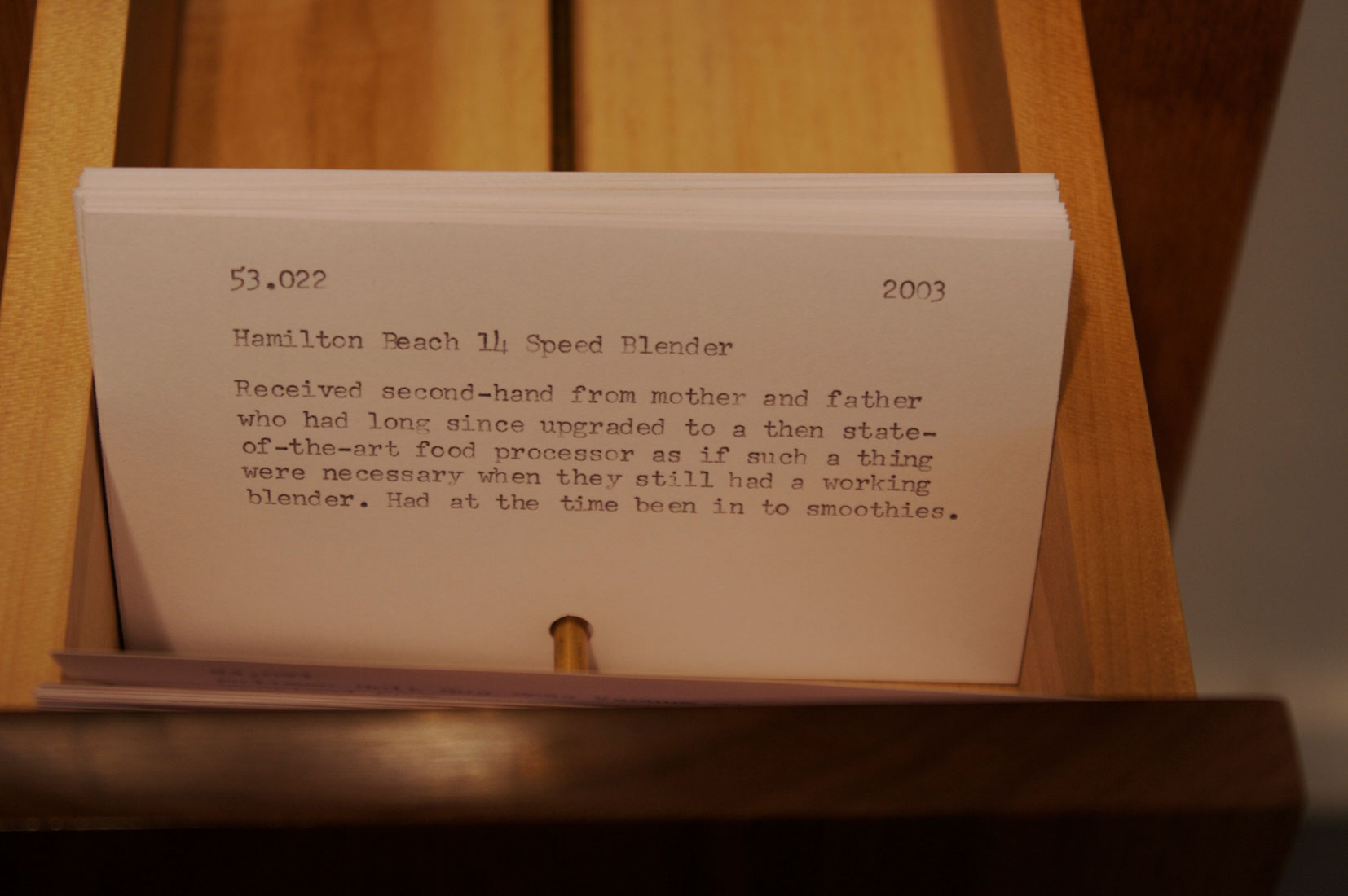ROTATE FOR MORE INFORMATION
INVENTORY
2012
I'm not sure exactly when or why I decided to catalog my possessions, other than that I wanted in some way to divest myself of attachment to them, but at some point I couldn't get the idea out of my head and by 2010 many of the objects in my small Greenpoint apartment bore numbers that corresponded to index cards. It was a first draft of sorts that informed my later organization. I'd also begun to use my vacation time to build what would later become the catalog itself. Not being a particularly talented nor efficient carpenter, I soon realized that the woodworking alone might easily take another ten years at the rate I was going. And so, I left my job and moved away, living out of boxes and concentrating on the catalog full time for several months.
The result is an interactive biography of a reluctant consumer, one who used to sentimentally attach quite a bit of meaning to such everyday objects as ticket stubs and bookmarks. The piece itself consists of three parts: a series of approximately 2600 instant photos, arranged in a grid as space allows, a set of corresponding 3x5 index cards bearing brief histories of how the object ended up in my possession, and an upright card-catalog of 36 drawers. The photos (and the actual objects) bear serial numbers that correspond to the cards. Unassisted, viewers learn to cross-reference the photos with the cards, tracing their way through the narrative of possession.
Material:
Oak, walnut, and brass
Instant photos mounted on eukaboard
3x5 index cards
Size:
variable
SCROLL RIGHT FOR MORE →
THREE ATTEMPTS
2017
I was nursing a coffee at Cafe Zoka in Tangletown, re-reading some Beckett and biding my time until 4pm when Mighty-O Donuts would sell at half-price its unsold stock, a near quotidian event for me at the time, when I was struck by the idea for a new installation: I would attempt to write my autobiography in a single sitting and present the result on a desk that I'd built. I drew a quick sketch and took a few notes before packing up and heading to Mighty-O across the street.
The idea of autobiography has always fascinated me. It's a literary form restricted to those who've attained a certain amount of power and fame. It's arrogant. It's never complete. In short, it's a form ill-suited to a twenty-nine-year-old nobody like me.
It took another two years for me to complete work on the desks. It was important to me that they be fine objects, built well, without the use of artificial fasteners. Honest desks made from honest cherry. It then took another three years before I had the guts to sit down and compose the texts. In the end I decided on three attempts. Each would represent a different formal approach to the problem of expressing a self in toto.
Scroll A is more or less a straight narration, starting from birth. Fairly typical stuff. I believe I wrote through the age of twenty or thereabouts when the camera ran out of memory.
Scroll B is a fastidious minute-by-minute account of my activities the day prior to attempt number two.
Scroll C is a series of short descriptions of everyone whose name appeared in my cell phone at the time.
The length of the compositions was dictated by the limitations of my video rig: twelve hours. Viewers are thus presented with three distinct representations of time passing: looped videos of the real-time compositions, the 50' scrolls which are the physical result of those compositions, and the non-linear stories contained in those scrolls.
Material
Cherry, typewriters, scrolls, video
Size:
variable













